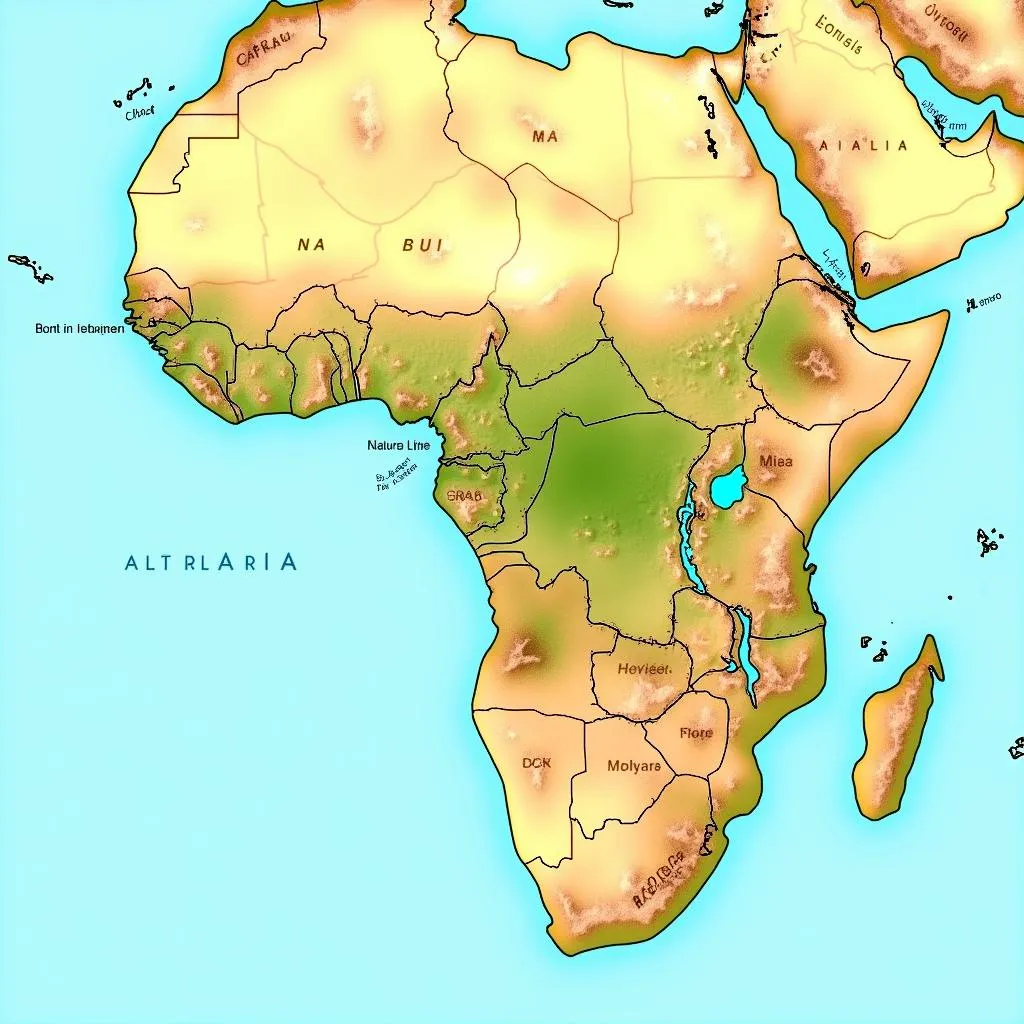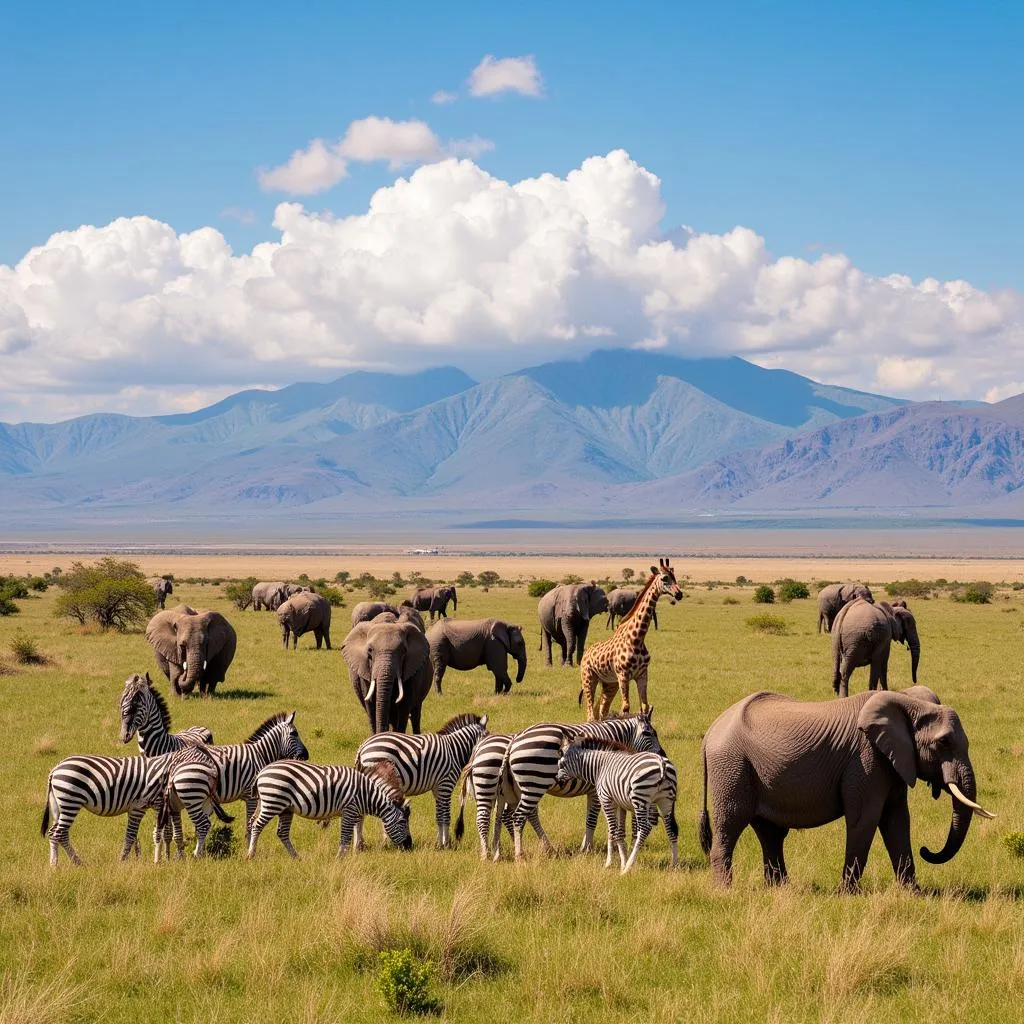The African Continental Split: Unveiling Earth’s Dramatic Transformation
The African Continental Split is a captivating geological phenomenon that is slowly reshaping our planet. This ongoing event showcases the immense power of nature and offers a glimpse into the future landscape of Earth.
The Science Behind the African Continental Split
The Earth’s crust is not a single, solid shell. Instead, it’s fragmented into massive tectonic plates that fit together like a giant jigsaw puzzle. These plates are constantly shifting, driven by the movement of molten rock in the Earth’s mantle. The African continental split is a result of this ongoing tectonic activity.
The driving force behind the split is the East African Rift System (EARS), a network of valleys and volcanoes stretching over 3,000 kilometers (1,864 miles) from the Afar region in Ethiopia down to Mozambique in Southern Africa. Along this rift, the African plate is being pulled apart by the diverging movement of the Somali and Nubian tectonic plates.
How the Rift is Slowly Splitting Africa
The process of continental rifting is a gradual one, unfolding over millions of years. Here’s a simplified breakdown of how it’s happening:
- Mantle Upwelling: Hot, less dense material rises from the Earth’s mantle, putting pressure on the overlying crust.
- Crustal Stretching and Thinning: The upward pressure from the mantle causes the crust to stretch and thin, creating a depression known as a rift valley.
- Faulting and Volcanism: As the crust stretches, it fractures along fault lines. Magma rises through these fissures, leading to volcanic eruptions. The East African Rift Valley is dotted with active and dormant volcanoes, including Mount Kilimanjaro and Mount Kenya.
- Seafloor Spreading: Eventually, the rift may extend and deepen enough to allow seawater to flood in. This can create a new ocean basin, as seen in the Red Sea, which was formed by the separation of the Arabian Peninsula from Africa millions of years ago.
 East African Rift System Map
East African Rift System Map
The Future Landscape of Africa
The African continental split is predicted to continue for millions of years to come. While it’s impossible to know for sure how the landscape will evolve, scientists anticipate significant changes:
- A New Ocean: The East African Rift Valley is expected to widen and deepen, eventually flooding with seawater and forming a new ocean basin. This will effectively divide the African continent into two separate landmasses.
- Volcanic Activity: As the rift widens, volcanic eruptions will likely become more frequent and intense, shaping the surrounding landscape.
- Climate Change: The geological shifts associated with the split could have profound impacts on regional and global climates.
- Impact on Wildlife: The separation of landmasses will likely lead to the isolation and potential evolution of new species, while also posing challenges for existing wildlife populations.
 African Wildlife Near Rift Valley
African Wildlife Near Rift Valley
The Significance of the African Continental Split
The African continental split provides a unique opportunity to study Earth’s dynamic processes in action. By observing this ongoing phenomenon, scientists can gain a deeper understanding of:
- Plate Tectonics: The rift offers a live demonstration of plate tectonics, providing insights into how continents move and how the Earth’s surface is constantly reshaped.
- Geological History: By studying the rocks and fossils in the rift valley, scientists can piece together the geological history of Africa and the Earth as a whole.
- Climate Change Impacts: The rift provides a natural laboratory for studying the interplay between geological events and climate change.
- Evolutionary Processes: The splitting of continents can drive speciation, making the rift a fascinating area to study how life adapts to changing environments.
A Testament to Earth’s Ever-Changing Nature
Dr. Amani Jabari, a renowned geophysicist specializing in the East African Rift, emphasizes the significance of this ongoing event: “The African continental split is a powerful reminder that our planet is in a constant state of flux. It allows us to witness the forces that have shaped Earth over billions of years and to gain a deeper appreciation for the dynamic nature of our world.”
The African continental split is a slow-motion spectacle of immense geological power, steadily redrawing the map of our planet. As the rift continues to widen, it will continue to captivate scientists and the public alike, offering a glimpse into Earth’s ever-evolving narrative.
FAQs About the African Continental Split
- Is the African continent splitting in two right now? The process is gradual and will take millions of years to fully split the continent.
- How fast is the African continent splitting? The plates are moving apart at a rate of a few millimeters to a few centimeters per year.
- What will happen to the countries located along the rift? As the rift widens, some countries may eventually be divided by the new ocean.
- Is the African continental split dangerous? While the geological processes are natural, they can pose risks such as earthquakes and volcanic eruptions.
- Can we stop the African continent from splitting? No, the forces driving the split are far beyond human control.
Explore More About Africa’s Dynamic Geology
If you’re eager to delve deeper into the fascinating world of geology, be sure to explore our other articles on the African continent split in two and the intriguing details revealed by the African rift valley map.
Contact us at +255768904061, email us at kaka.mag@gmail.com or visit us at Mbarali DC Mawindi, Kangaga, Tanzania for any assistance. Our customer service team is available 24/7.


